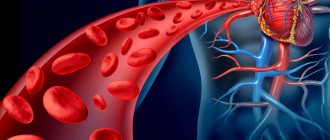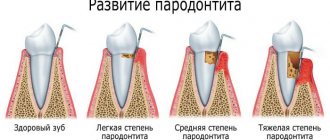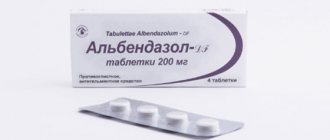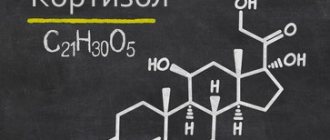Lymph is a clear liquid that circulates throughout the body. Its main function is to cleanse the body of toxins and infectious agents by supplying intercellular fluid to the lymph nodes, as well as transporting beneficial substances from the lymph nodes to the human circulatory system. The lymphatic system, through which lymph moves, is a complex structure similar to the circulatory system. There are a number of diseases of the lymphatic system that are very dangerous and therefore must be identified in a timely manner.
What is lymph stasis
If there is a system in the human body that most of us know almost nothing about, it is the lymphatic system. Although the correct functioning of other systems, including the circulatory and immune systems, depends on it. It is the lymphatic system that takes care of removing toxic and pathogenic substances from the body. Therefore, lymph stagnation is always serious. But before analyzing why this condition is dangerous for humans, we must at least understand in general terms what the lymphatic system is.
Content:
- What is lymph stasis
- Why does it occur
- Signs of lymph stagnation
- Why is lymph stagnation dangerous?
- Treatment of lymph stagnation
- How to improve lymph flow
The main thing to understand is that the lymphatic system is made up of many vessels, similar to blood vessels, and they run throughout the body. A liquid flows through these vessels - lymph, which consists of water and toxins, waste metabolites that the body does not need. Lymph nodes are located in certain areas of this vascular system. These are peculiar reservoirs into which lymph flows for cleansing. That is, if we greatly simplify this scheme, then it is important for a person that the lymph filled with “garbage” gets into the lymph node and gets rid of it there. But if for some reason the lymphatic substance does not enter the lymph nodes, but remains in an unrefined form in the vessels and soft tissues, they speak of lymph stagnation. That is, lymph stagnation is a violation of the outflow and purification of lymphatic fluid. Let's talk further about what this entails.
Functions
If we talk in more detail about the functions, we should note the connection between the lymphatic system and the cardiovascular system. It is thanks to lymph that various elements are delivered that cannot immediately appear in the cardiovascular system:
- proteins;
- fluid from tissue and intertissue space;
- fats that come mainly from the small intestine.
These elements are transported to the venous bed and thus end up in the circulatory system. These components can then be removed from the body.
At the same time, many inclusions unnecessary for the body are processed at the lymph stage, in particular we are talking about viruses and infections that are neutralized by lymphocytes and destroyed in the lymph nodes .
It should be noted the special function of lymphatic capillaries, which are larger in size compared to the capillaries of the circulatory system and have thinner walls. proteins and other components can enter the lymph from the interstitial space .
Additionally, the lymphatic system can be used to cleanse the body , since the intensity of lymph flow largely depends on the compression of blood vessels and muscle tension.
Thus, massage and physical activity can make the movement of lymph more effective. Thanks to this, additional cleansing and healing of the body becomes possible.
Why does it occur
One of the most common causes of lymph stagnation is lack of mobility. To understand how fluid in blood vessels is related to physical activity, we must return to the structure and principles of operation of the lymphatic system. The trick is that the lymphatic system does not have an organ that pumps fluid through the vessels (for comparison, blood circulates throughout the body due to the contractions of the heart). Lymph is able to move correctly through the vessels only thanks to body movements (walking, running, physical work, playing various sports, etc.). If the whole reason for lymph stagnation is inactivity, then it is quite easy to correct the situation without the help of doctors. But there are other, more serious reasons for stagnation of lymph flow.
Disturbances in the functioning of the lymphatic system can occur as a result of such diseases and conditions:
- lymph node injuries;
- neoplasms in the lymphatic system;
- paralysis or other illnesses that limit mobility;
- removal of lymph nodes during breast surgery;
- obstruction of the lymph nodes;
- serious infectious diseases;
- obesity;
- compression of lymphatic vessels;
- hypothyroidism (underactive thyroid gland);
- vein blockage;
- hormonal disorders.
In addition, lymph congestion can occur after taking certain medications, due to alcohol abuse or drug use. Another common cause of improper lymph flow is dehydration.
Analysis of lymph composition
For a general assessment of the state of the lymphatic system, there is no need to take lymph - a blood test is enough
The composition of the lymph is determined by puncturing the lymph node (biopsy) and taking a small amount of fluid for analysis. Indications for such an analysis are inflammation of the lymph nodes, prolonged enlargement of the lymph nodes, suspicion of oncology.
A healthy person does not need to undergo a preventive lymphatic test; the health of the lymphatic system can be assessed using a biochemical blood test.
Lymph node biopsy is a rather traumatic procedure, which is prescribed only if there are strict indications. In other cases, the functioning of the lymphatic system is assessed using a general and biochemical blood test. Based on the nature of changes in the number of lymphocytes, a diagnosis can be made if pathologies of the lymphatic system are suspected. Moreover, a biochemical blood test can detect lymphoma at an early stage.
Signs of lymph stagnation
It is not difficult to recognize lymph stagnation. The first and most obvious sign of impaired lymph flow is swelling. But here you need to understand one thing. From time to time, everyone may experience swelling due to stagnation of fluid in the body. For example, after eating very salty food or alcohol, in hot weather or after a long journey. If this happened once, and the swelling itself went away quickly, then there is nothing to worry about. It’s a different matter if swelling has become an integral part of life: they are very noticeable and appear constantly. In this case, most likely there are problems in the lymphatic system.
Swelling due to lymph stagnation has characteristic symptoms. Typically, swelling is observed in the arms or legs. Often, not both limbs swell at once, but only one, while the other remains in normal condition. In such cases, experts talk about unilateral accumulation of lymphatic fluid. In addition to the extremities, when lymph stagnates, swelling can appear on the face, chest and abdomen, and what is most dangerous is that the internal organs swell.
By the way, cellulite, which many women perceive only as a cosmetic problem, and its cause is considered to be excess weight, is in fact also one of the signs of lymph stagnation. In fact, “orange peel” is swollen and overgrown connective tissue.
The simplest method for home diagnosis is the usual pressure with your fingers on the swollen area. If, even after gentle pressure, there are dents on the tissue that level out very slowly, this is a reason to consult a doctor.
Peculiarities
Actually, the word “lymph” comes from the Latin “lympha”, which translates as moisture or clean water. Just from this name it is possible to understand a lot about the structure of lymph, which washes and cleanses the entire body .
Many could observe lymph, since this liquid is secreted on the surface when there are wounds on the skin . Unlike blood, the liquid is almost completely transparent.
According to its anatomical structure, lymph belongs to connective tissue and contains a large number of lymphocytes in the complete absence of red blood cells and platelets.
In addition, lymph, as a rule, contains various waste products of the body. In particular, the previously noted large protein molecules that cannot be absorbed into the venous vessels.
Such molecules can often be viruses , which is why the lymphatic system is used to absorb such proteins.
Lymph may contain various hormones that are produced by endocrine glands. Fats and some other nutrients come here from the intestines, and protein from the liver.
Why is lymph stagnation dangerous?
When the body loses the ability to get rid of waste metabolic products in a timely manner, they begin to accumulate in the intercellular space. In this case, not only the lymphatic system suffers, but the entire body. Toxins accumulate in tissues, causing various health problems. Stagnation of lymph causes swelling, disturbances in the functioning of the immune system, intoxication processes begin in the body, and the person weakens.
Many people perceive soft tissue swelling solely as a cosmetic problem. And they are very much mistaken. When the tissue swells, it increases in volume and begins to put pressure on the blood vessels. The stronger the swelling, the more pressure is placed on the capillaries, arteries and veins. As a result, blood flow deteriorates and the nutrition of internal organs is disrupted. If the swelling is very severe, it can cause not just discomfort, but also pain.
Due to lymph stagnation, diseases and conditions such as:
- bags under the eyes;
- chronic pain;
- overweight;
- cellulite;
- mastopathy;
- excessive sweating;
- chronic sinusitis;
- chronic inflammation of the lymph nodes;
- allergy;
- swelling of the eyelids and ankles;
- arthritis;
- headache;
- chronic fatigue;
- frequent colds;
- tonsillitis;
- bronchitis;
- pneumonia;
- heart diseases;
- high blood pressure;
- cancer.
Enlarged lymph nodes: causes
The lymph nodes themselves never enlarge. The course of some pathology always leads to such a phenomenon. Based on the enlargement of the lymph nodes, one can make an assumption about the development of the disease. Most often this leads to:
- Insect bites. In this case, lymph nodes usually become enlarged in people who are prone to allergies.
- The course of infectious processes. An increase in the size of lymph nodes can provoke tuberculosis, inflammation of the gums, caries, acute viral infection, pneumonia, tonsillitis. In young children, such a reaction occurs to infection through damaged skin, especially if the wound was in close proximity to the lymph node.
- Development of malignant tumors. Often it is the presence of cancer that leads to regional enlargement of lymph nodes. This symptom may be the first sign of cancer.
- Parasitic infestation. The disease most often affects children. Once in the body and beginning to actively multiply, the parasites release toxic substances, leading to symptoms of general intoxication and enlarged lymph nodes.
- Autoimmune lesions.
Enlargement of lymph nodes can be carried out in different ways. In addition to the appearance of bumps, the structure of the surface may change. It can become dense or become lumpy. It is worth paying attention to the mobility of the enlarged lymph node. Some diseases lead to adhesion of the organ to tissues or to other lymph nodes. The affected organ may be hard or soft. The condition of the skin over the lymph nodes must also be taken into account. If inflammation occurs, the skin becomes swollen or red. However, this sign is not always present.
Treatment of lymph stagnation
To treat signs of lymph stagnation, a comprehensive program is used, which includes medication and physical therapy.
Patients are usually prescribed drugs with a decongestant effect, as well as to normalize blood circulation, increase vascular tone and reduce blood viscosity. In addition to these groups of medications, people with impaired lymph flow are advised to take vitamin complexes and immunomodulators. If severe swelling appears in the legs, special compression stockings should be worn during the day (as an alternative, bandages using an elastic bandage).
Physiotherapeutic treatment includes laser and magnetic therapy, manual massages and showers. In addition, there is a set of exercises that help improve lymph flow and eliminate swelling from the extremities. One of the most effective exercises is known as the Marilyn Monroe “legs on the wall” exercise. They say that this is how the actress saved herself from swelling of her legs. To do this, you need to lie on your back, put a pillow under your head, bend your knees at a right angle and rest your feet against the wall (this is how you measure the correct distance between the wall and your hips). Next, your legs should be straightened and in this state lean against the wall. It is useful to spend 10 minutes a day in this position. During the exercise, you should relax, breathe evenly, and the exhalation should be 2 times longer than the inhalation.
Contraindications
Contraindications to lymph cleansing:
- The period of bearing a child.
- Diseases of the lymphatic system.
- High blood pressure.
- Presence of stones in the gall bladder.
- Lactation.
- Diabetes.
- Diseases of the adrenal glands.
- Heart failure.
Although there are not many contraindications for lymph cleansing, you should consult a doctor before deciding on the procedure. The doctor will be able to accurately determine whether the patient needs lymph cleansing.
How to improve lymph flow
The best prevention of lymph stagnation is a balanced diet and a healthy lifestyle.
Drink more water
Maintaining the necessary hydration is extremely important to ensure that lymph actively moves through the vessels and drains properly. Lymph is approximately 95% liquid, which is why it is so important to drink plenty of clean water throughout the day. Dehydration is one of the most common causes of lymphatic stagnation. But what is important is that it is quite easy to eliminate this cause. The average daily water intake for a healthy adult is 30 ml per kilogram of body weight. It is also very easy to check whether the body is suffering from dehydration. To do this, you need to pay attention to the color of your urine. It should be straw color. If it is darker, you need to increase the amount of fluid consumed. If you find it difficult to drink so much water in its pure form, you can add a slice of lemon, some herbs or a few fresh berries. But it is important that it is water, and not juices or other drinks.
Move more
Along with maintaining hydration, daily exercise is very important for proper lymphatic flow. Any physical activity speeds up your breathing rate, improves blood circulation and stimulates you to consume more fluid, and together these factors help pump lymph through the system, preventing its stagnation. To improve the movement of lymph through the vessels, it is most useful to engage in sports walking, running and jumping. Although less active yoga is also beneficial for the lymphatic system. Twisting and stretching exercises cause tissue contraction and thus promote proper lymph flow. It is very important to exercise daily for people who have a sedentary job. Inactivity is one of the most common causes of lymph stagnation.
Dry brush massage
This technique has been known for centuries and has been used in Eastern medicine since ancient times. These days it is experiencing a surge of unprecedented popularity. Massaging the body with a dry brush with stiff bristles improves blood flow and prevents lymphatic stagnation. But it is important to do all movements from the bottom up towards the heart.
Sauna
If there are no contraindications, it is useful to visit a bathhouse or sauna to improve lymphatic drainage. When the body warms up, blood circulation and lymph movement improve. In addition, while a person is in the sauna, the parasympathetic nervous system is activated, that is, the body goes into relaxation mode. And it is also good for the lymphatic system, since stress is one of the culprits in slowing down lymph flow.
Pay attention to nutrition
The best foods for the lymphatic system are fruits, vegetables, and nuts and seeds. Raw vegetables and fruits contain antioxidants and enzymes that help the body break down and eliminate toxins faster. All plant foods are important for the lymphatic system, but leafy greens hold a special place in this group. Such foods contain a lot of chlorophyll, which improves the functioning of the lymphatic system.
Regarding seeds and nuts, they contain omega-3 and omega-6 essential fatty acids, which, among other benefits, also help cleanse the lymph of toxins. But it is important to understand that seeds and nuts are best consumed raw. Fried or glazed will not produce the desired effect.
Best materials of the month
- Coronaviruses: SARS-CoV-2 (COVID-19)
- Antibiotics for the prevention and treatment of COVID-19: how effective are they?
- The most common "office" diseases
- Does vodka kill coronavirus?
- How to stay alive on our roads?
Practice breathing exercises
Breathing exercises have many benefits. One of them is improving lymph outflow. If you devote 10-15 minutes to breathing exercises daily, this will speed up the movement of lymph through the vessels. During deep breathing, pressure is created on the lymphatic system and thus the fluid in it moves upward.
Indications
You can understand that the lymph needs cleansing by a number of signs.
Indications for lymph cleansing are:
- Allergic reaction of the body.
- Frequent arthrosis, arthritis and developing osteochondrosis.
- Intoxication of the body.
- Phenomena of ischemia.
- Discharge from the genitals with an unpleasant odor.
- Excess body weight.
- Unpleasant odor from the feet, armpits, and mouth.
- Edema.
- Skin rashes, acne and warts.
- Varicose veins and thrombophlebitis.
- Indigestion.
- Increased size of tonsils and lymph nodes.
- Infections of the pelvic organs that have a chronic course. This includes adnexitis, endometritis, cystitis.
- Endocrine diseases, damage to the thyroid gland.
All of these symptoms and illnesses may indicate a contaminated lymphatic system. However, just one point is not a reason for emergency cleaning. As a rule, people who need cleansing procedures experience a combination of 3-4 signs at the same time.
How does the human lymphatic system work?
The role of the body's lymphatic system is primarily to resist negative environmental factors, protect against destructive external influences and filter out pathogenic and toxic units that have somehow penetrated into the internal environment of the human body. The human lymphatic system performs functions without which it is unthinkable to maintain the health and vitality of the body, its full functionality and optimal well-being. These functions:
- Protective. This function is provided thanks to the lymphoid tissue of the lymph nodes, which is capable of synthesizing the primary cells of the immune response - lymphocytes, phagocytes and antibodies. The effectiveness of this reaction directly determines whether the pathogen can cause damage to human health, whether the disease will develop against this background and how severe it will be.
- Filtration. Another function that depends on the activity of the lymph nodes. It consists of mechanical filtration of foreign objects that have somehow penetrated the lymph flow. This is how foreign substances, toxins, bacteria and other units alien to the human internal environment are retained.
- Humoral. The anatomy of the human lymphatic system covers more than 90% of the body, which allows the transmission of signal molecules to all organs and tissues. Such humoral connections allow timely synthesis of the amount of biologically active components necessary for the immune response.
- Transport. Thanks to the lymph flow, fluid and other compounds are transported that physiologically cannot immediately penetrate into the bloodstream. A particularly significant role in this process is played by the delivery of lipids into the blood, which enter the lymph in the intestinal sections. In addition, due to the flow of lymph, albumin molecules that have entered the intercellular fluid from other blood capillaries with a high histohematic barrier are returned to the blood. On average, about 100 grams of protein compounds are returned with lymph per day, without which the body’s losses would be irreplaceable.
- Homeostasis. Normal functioning of the lymphatic system ensures adequate indicators of the composition and volume of the interstitial fluid of the body.
- Drainage. With the flow of lymph, excess fluid is removed from the tissues, which is the prevention of edema and tumors. During normal operation of the lymphatic system, this function seems insignificant - its role becomes especially noticeable when the drainage process is disrupted, resulting in significant tissue swelling up to the limitation of motor capabilities.
Lymph cleansing points
Not only the excretory and digestive systems are capable of releasing useless and toxic compounds and breakdown products contained in the body, but the anatomy of the human lymphatic system includes as many as six sites that in one way or another allow you to get rid of foreign and pathogenic molecules. These include:
1. Vagina in women and urethra in men
As a rule, any pathogenic microorganism that has penetrated the internal environment of the human body affects the composition of the secretion secreted by the genitourinary system. And if in women this condition is usually accompanied by heavy discharge, then for men it is much more difficult - for them, unpleasant but painless discharge may be accompanied by itching, burning and sharp pain when urinating.
However, this function of the body is more protective than symptomatic, and does not require special treatment. Together with copious secretions, pathogenic microorganisms and other components that have already been attacked by the body’s immune system come out. Reducing the secretion of these secretions means disrupting the natural outflow of pathogens, trapping them inside the body. In this case, it is much more logical and effective to direct treatment to the source of the problem that caused such a reaction.
2. Gastrointestinal tract
Through the intestines, not only residual food components are removed from the body, but also toxic substances that enter the body from the outside and are filtered by the lymphatic system. The walls of the gastrointestinal tract contain a large number of lymph nodes, in which the main stages of filtering foreign components occur. Through their ducts, these toxins and their compounds enter the intestines, from where they are safely evacuated with feces.
3. Sweat glands
With sweat, unnecessary hormonal compounds, toxins, waste products of pathogenic microorganisms and other substances are released through the skin, the excess of which will sooner or later lead to severe intoxication. The anatomy of the human lymphatic system is designed in such a way as to speed up and facilitate the process of removing these compounds as much as possible, but a thoughtless choice of cosmetics can nullify all the efforts of the body.
By purchasing an antiperspirant deodorant with 24-hour protection against sweating, you block the outflow of toxic substances for the whole day, which are forced to settle in tissues and organs, causing symptoms of intoxication. After which the cycle repeats: new irrigation with modern perfume certainly protects against unpleasant odors and sweat stains, but at the same time completely blocks the possibility of self-cleansing of the lymphatic system. That is why experienced dermatologists do not recommend such cosmetics for everyday use; careful hygiene and light, environmentally friendly perfumes can protect against repulsive amber much better and without harming your health.
4. Nose
The nasal cavity is another part of the body rich in lymphatic formations. This department is primarily responsible for countering airborne infections that enter with inhaled air. The copious secretion of mucus in this case is a protective reaction of the body, and not an unpleasant symptom of a cold, therefore, as in the case of discharge from the genitourinary system, you should not try to dry it out - this will only aggravate the problem and will in no way bring the desired cure closer.
5. Tonsils
Previously, it was believed that the tonsils were a vestigial and completely useless organ that could be cut out without much harm to the body. However, now most immunologists agree that such an operation is the first step towards “killed” immunity, especially regarding inflammatory processes in the throat.
6. Airways
Immune reactions occurring in the larynx in response to incoming pathogens cause laryngitis - a rather unpleasant symptom of airborne infections that could not be stopped at the stage of penetration into the mucous membranes of the nasal cavity. If here the immune processes are not completed successfully, the infectious process can affect the lower parts of the respiratory system: the trachea, bronchi and lungs, causing, respectively, tracheitis, bronchitis and pneumonia.
Procedures
There are various medical procedures that are aimed at cleansing the lymph. A doctor may recommend them. All manipulations are carried out in a medical institution.
Lymphatic drainage massage
Lymphatic drainage massage is a popular procedure that is performed in beauty salons and medical centers. It is performed using machines and manually.
Massage allows you to get rid of lymphatic stagnation and remove toxins from the body.
Lymph nodes are located near the surface of the skin, so a little work on them is enough to increase the flow of lymph. This procedure allows you to rejuvenate the skin, make it fresh and smooth.
Physiotherapist Magomedov Abdurakhman shares his experience about the benefits of lymphatic drainage massage:
Pressotherapy
In this case, the patient is put on a special suit, after which the doctor pumps air into him. First, strong pressure is applied to the body, and then the air is released, which helps to relax the tissues.
This effect will accelerate the flow of lymph and accelerate the removal of harmful substances from the body. Pressotherapy is an excellent prevention of congestion in the lymphatic system.
The procedure cannot be called very comfortable, but it gives an excellent effect.
Vacuum roller massage
During the massage, the doctor moves a special roller over the patient's body. All movements are carried out along the lymphatic vessels. Thanks to this effect, a vacuum environment is created, which promotes the dilation of blood vessels. Lymph begins to flow faster, which allows harmful substances to be removed from the body.
The body is exposed to plastic cups, which create an artificial vacuum. There is a roller in the depth of each bowl, although outwardly this device does not resemble a roller.
Video: LPG, Velashape and Endosphere technologies - their differences:
The doctor brings the massager to the person’s skin, which causes air to be pumped in, and it tightens. When the pressure force reaches the desired peak, the roller, which moves intensively inside the bowl, will begin to apply pressure to the treated area of the body or face.
Microcurrents
The device has built-in electrodes that supply low-frequency currents. They are the ones that affect the human body. This causes blood to rush to the skin, and lymph flows out of the tissues, which allows you to cope with congestion.
There are special devices on sale that allow you to carry out the lymph cleansing procedure at home, but it is better to entrust your health to a professional.
Cosmetologist, physiotherapist, certified trainer-methodologist of the Geltek company - Irina Viktorovna Egorova about microcurrents:











